Roland HP601 Handleiding
Bekijk gratis de handleiding van Roland HP601 (32 pagina’s), behorend tot de categorie Piano. Deze gids werd als nuttig beoordeeld door 23 mensen en kreeg gemiddeld 4.1 sterren uit 12 reviews. Heb je een vraag over Roland HP601 of wil je andere gebruikers van dit product iets vragen? Stel een vraag
Pagina 1/32

° Play the Piano
˙
Play various sounds
This piano contains a wide variety of tones (sounds). You can freely select and perform using these
tones.
For a list of the sounds, refer to “Tone List” at the end of this manual.
˙
Play two layered tones (Dual Play)
You can layer two tones on a single key.
˙
Play dierent tones with your left and right hands (Split Play)
You can divide the keyboard into left and right zones, and select a dierent tone for each zone.
˙
Save your performance settings (Registration)
You can save tone settings and settings for Dual Play or Split Play, and recall them easily.
page 6
page 7
page 7
page 14
° Practice Songs
˙
Sound a metronome
You can sound a metronome.
˙
Practice along with the built-in songs
This piano contains numerous built-in songs.
For the song titles, refer to “Internal Song List” at the end of this manual.
˙
Recording the Song You’re Practicing
You can record your own playing.
page 8
page 9
page 10
° Adjust Your Piano
˙
Adjust the keyboard touch
You can adjust the touch sensitivity of the keyboard to match your own playing style.
˙
Match the pitch to other instruments
When playing together with other instruments, you can match the piano’s reference pitch to that of the
other instruments (Master Tuning).
˙
Create your own piano (Piano Designer)
You can customize the sound to your own taste by adjusting the sonic elements of the grand piano
sound.
page 6
page 22
page 13
Before using this unit, carefully read “USING THE UNIT SAFELY” and “IMPORTANT NOTES” (leaet “USING THE UNIT SAFELY” and Owner’s Manual (p. 26)). After reading, keep the
document(s) including those sections where it will be available for immediate reference.
Provision of functionalityBluetooth
Please be aware that depending on the country in which you purchased the piano, functionality might not be included.Bluetooth
The Bluetooth logo appears
when you turn on the power.
If Bluetooth functionality is included
Copyright © 2017 ROLAND CORPORATION
Owner’s Manual

2
° Read This First
Basic Operations
On this piano, you can use the buttons of the operating panel to make various function settings.
The “K” “J,” “-” “+,” “Enter s,” and “u Exit” indications shown in the screen indicate the buttons used to operate the various functions.
Selecting the category to set
Use the [ ] [ ] buttons to select the category that you want to set.K J
Selecting values within a category
Use the [-] [+] buttons to change a value within the category.
“Enter” and “Exit”
Use the [ ] (Enter) button to conrm the selected category or value.s
Use the [u] (Exit) button to go back to the previous operation.
Screen display
Upper line: shows the category to specify
(you can use the [ ] [ ] buttons to change K J
this)
Lower line: shows the value within the
category
(you can use the [-] [+] buttons to change
this)
CAUTION
5You must provide adult supervision
and guidance to ensure that a child
does not climb on top of the piano
or hang on it. Such behavior could
make the piano fall over, injuring
the child.
5Take care that foreign objects,
such as sheet music or other
papers, do not enter the piano
through openings in the
keyboard cover. Also, do not open
the cover while papers are placed
on the cover. Doing so might
make the papers impossible to
remove, causing malfunctions.
Using the keyboard cover to conceal the panel (Classic Position)
If you open the cover slowly, it stops at a position that hides the
operation panel. If you use the cover to hide the operation panel,
you’ll be able to concentrate on your playing as though you were
playing an acoustic piano. When you push the cover further inward
and up, it stops in a position where the operation panel is visible.
* When opening or closing the keyboard cover, take care not to pinch
your ngers between the moving part and the body of the unit.
Pay special attention to this when using the unit where children are
present.
Keyboard
cover

3
Read This First . . . . . . . . . . . . . . . . . . . . . . . . . . . . . . . . . . . . . . . . . . . . 2
Basic Operations . . . . . . . . . . . . . . . . . . . . . . . . . . . . . . . . . . . 2
CAUTION . . . . . . . . . . . . . . . . . . . . . . . . . . . . . . . . . . . . . . . . . . 2
Main Specications . . . . . . . . . . . . . . . . . . . . . . . . . . . . . . . . . . . . . . . 3
Easy Quick Guide . . . . . . . . . . . . . . . . . . . . . . . . . . . . . . . . . . . . . . . . . 4
Turning the Power On/O . . . . . . . . . . . . . . . . . . . . . . . . . . . 4
Selecting a Tone . . . . . . . . . . . . . . . . . . . . . . . . . . . . . . . . . . . 4
Using the Metronome . . . . . . . . . . . . . . . . . . . . . . . . . . . . . . 4
Selecting and Playing Songs . . . . . . . . . . . . . . . . . . . . . . . . . 4
Panel Descriptions . . . . . . . . . . . . . . . . . . . . . . . . . . . . . . . . . . . . . . . . 5
Operation Guide . . . . . . . . . . . . . . . . . . . . . . . . . . . . . . . . . . . . . . . . . . 6
Selecting a Tone . . . . . . . . . . . . . . . . . . . . . . . . . . . . . . . . . . . 6
Adjusting the Overall Volume . . . . . . . . . . . . . . . . . . . . . . . . 6
Adding Reverberation to the Sound (Ambience) . . . . . . . 6
Adjusting the Brightness of the Sound (Brilliance) . . . . . . 6
Making Various Settings (Function Mode) . . . . . . . . . . . . . 6
Transposing the Pitch (Transpose) . . . . . . . . . . . . . . . . . . . . 6
Changing the Playing Feel of the Keyboard (Key Touch) . 6
Dividing the Keyboard for Two People (Twin Piano) . . . . 7
Playing Dierent Tones with the Left and Right Hand
(Split Play) . . . . . . . . . . . . . . . . . . . . . . . . . . . . . . . . . . . . . . . . . 7
Creating Your Own Piano Tone (Piano Designer) . . . . . . . . 7
Saving Your Performance Settings (Registration) . . . . . . . 7
Layering Two Sounds (Dual Play) . . . . . . . . . . . . . . . . . . . . . 7
Display . . . . . . . . . . . . . . . . . . . . . . . . . . . . . . . . . . . . . . . . . . . 8
Using the Bluetooth Function . . . . . . . . . . . . . . . . . . . . . . . . 8
Selecting an Item/Editing a Value . . . . . . . . . . . . . . . . . . . . 8
Sounding the Metronome . . . . . . . . . . . . . . . . . . . . . . . . . . . 8
Selecting a song . . . . . . . . . . . . . . . . . . . . . . . . . . . . . . . . . . . 9
Playing Back or Recording . . . . . . . . . . . . . . . . . . . . . . . . . . . 9
Disabling the Buttons (Panel Lock) . . . . . . . . . . . . . . . . . . . 9
Selecting the Part(s) to Play (Part Mute) . . . . . . . . . . . . . . . 9
Advanced Operation . . . . . . . . . . . . . . . . . . . . . . . . . . . . . . . . . . . . . 10
Recording Your Performance . . . . . . . . . . . . . . . . . . . . . . . . . . . . . . 10
Recording . . . . . . . . . . . . . . . . . . . . . . . . . . . . . . . . . . . . . . . . . 10
Recording a New Song . . . . . . . . . . . . . . . . . . . . . . . . . . . . . . 10
Overdubbing a Recorded Performance . . . . . . . . . . . . . . . 10
Recording Audio to USB Flash Drive . . . . . . . . . . . . . . . . . . 11
Deleting a Saved Song (Delete Song) . . . . . . . . . . . . . . . . . 11
Copying a Saved Song (Copy Song) . . . . . . . . . . . . . . . . . . 12
Renaming a Song (Rename Song) . . . . . . . . . . . . . . . . . . . . 12
Creating Your Own Piano Tone (Piano Designer) . . . . . . . . . . . . . 13
Saving Your Performance Settings (Registration) . . . . . . . . . . . . 14
Recalling a Registration . . . . . . . . . . . . . . . . . . . . . . . . . . . . . 14
Saving Current Settings into a Registration . . . . . . . . . . . . 14
Saving a Registration Set (Registration Export) . . . . . . . . . 15
Loading a Saved Registration Set (Registration Import) . 15
Loading/Saving Piano Setups . . . . . . . . . . . . . . . . . . . . . . . . . . . . . 16
Saving Piano Settings (Piano Setup Export) . . . . . . . . . . . . 16
Loading Piano Settings (Piano Setup Import) . . . . . . . . . . 16
Convenient Functions . . . . . . . . . . . . . . . . . . . . . . . . . . . . . . . . . . . . 17
Initializing the Memory (Format Media) . . . . . . . . . . . . . . . 17
Restoring the Factory Settings (Factory Reset) . . . . . . . . . 17
Using the
Bluetooth® Functionality . . . . . . . . . . . . . . . . . . . . . . . . 18
Here’s What You Can Do . . . . . . . . . . . . . . . . . . . . . . . . . . . . . 18
Listening to Music Through the Piano’s Speakers . . . . . . . 19
Making Initial Settings (Pairing) . . . . . . . . . . . . . . . . . . . . . . 19
Connecting an Already-Paired Mobile Device . . . . . . . . . . 19
Playing Back Audio . . . . . . . . . . . . . . . . . . . . . . . . . . . . . . . . . 19
Using the Piano with an App . . . . . . . . . . . . . . . . . . . . . . . . 20
Example Apps That Can Be Used with the Piano . . . . . . . . 20
Making Settings (Pairing) . . . . . . . . . . . . . . . . . . . . . . . . . . . 20
Using the Pedals to Turn Pages on a Music Score App . . . 21
Making Initial Settings (Pairing) . . . . . . . . . . . . . . . . . . . . . . 21
Connecting an Already-Paired Mobile Device . . . . . . . . . . 21
Turning Pages . . . . . . . . . . . . . . . . . . . . . . . . . . . . . . . . . . . . . 21
Various Settings . . . . . . . . . . . . . . . . . . . . . . . . . . . . . . . . . . . . . . . . . . 22
Making Various Settings (Function Mode) . . . . . . . . . . . . . . . . . . 22
Basic Operations in Function Mode . . . . . . . . . . . . . . . . . . . 22
Matching the Pitch with Other Instruments
(Master Tuning) . . . . . . . . . . . . . . . . . . . . . . . . . . . . . . . . . . . . 22
Changing the Tuning Method (Temperament) . . . . . . . . . 22
Specifying the Tonic Note (Temperament Key) . . . . . . . . . 22
Adjusting the Song (SMF) Volume (Song Volume SMF) . . 22
Adjusting the Song (Audio) Volume
(Song Volume Audio) . . . . . . . . . . . . . . . . . . . . . . . . . . . . . . . 22
Adjusting the Volume of an Audio Playback Device or
Bluetooth Audio (Input/Bluetooth Vol.) . . . . . . . . . . . . . . . 22
Specifying the Keyboard’s Tone When Playing Back a
Song (SMF Play Mode) . . . . . . . . . . . . . . . . . . . . . . . . . . . . . . 23
Selecting the Format for Recording (Recording Mode) . . 23
Changing How the Pedal Eects Are Applied
(Damper Pedal Part) . . . . . . . . . . . . . . . . . . . . . . . . . . . . . . . . 23
Changing How the Pedals Work (Center Pedal) . . . . . . . . . 23
Changing the Eect of the Pedal (Left Pedal) . . . . . . . . . . 23
Using a Pedal to Switch Registrations (Reg. Pedal Shift) . 23
Adjusting the Brightness of the Display
(Display Contrast) . . . . . . . . . . . . . . . . . . . . . . . . . . . . . . . . . . 23
Specifying a Maximum Volume (Volume Limit) . . . . . . . . 24
Outputting Sound from Both an External Speaker and
the Internal Speakers (Speaker Auto Mute) . . . . . . . . . . . . 24
Preventing Doubled Notes When Connected to a
Sequencer (Local Control) . . . . . . . . . . . . . . . . . . . . . . . . . . . 24
MIDI Transmit Channel Settings (MIDI Transmit Ch) . . . . . 24
Changing the Language Displayed in the Screen
(Language) . . . . . . . . . . . . . . . . . . . . . . . . . . . . . . . . . . . . . . . . 24
Making the Power Automatically Turn O After a Time
(Auto O) . . . . . . . . . . . . . . . . . . . . . . . . . . . . . . . . . . . . . . . . . 24
Saving Settings Automatically (Auto Memory Backup) . . 24
Connecting Your Equipment . . . . . . . . . . . . . . . . . . . . . . . . . . . . . . 25
USING THE UNIT SAFELY . . . . . . . . . . . . . . . . . . . . . . . . . . . . . . . . . . 26
IMPORTANT NOTES . . . . . . . . . . . . . . . . . . . . . . . . . . . . . . . . . . . . . . . 26
Troubleshooting . . . . . . . . . . . . . . . . . . . . . . . . . . . . . . . . . . . . . . . . . . 27
Error Messages . . . . . . . . . . . . . . . . . . . . . . . . . . . . . . . . . . . . . . . . . . . 29
° Contents
Main Specications Roland HP601: Digital Piano
HP601
Sound Generator Piano Sound: SuperNATURAL Piano
Keyboard PHA-50 Keyboard: Wood and Plastic Hybrid Structure, with Escapement and
Ebony/Ivory Feel (88 keys)
Bluetooth
Audio Bluetooth Ver 3.0 (Supports SCMS-T content protection)
MIDI, Turning
music sheet Bluetooth Ver 4.0
Power Supply AC Adaptor
Power Consumption 5 W (4 W–22 W)
Dimensions
(including piano
stand)
With music rest:
1,379 (W) x 430 (D) x 1,014 (H) mm
54-5/16 (W) x 16-15/16 (D) x 39-15/16 (H) inches
HP601
Weight
(including piano
stand)
50.0 kg
110 lbs 4 oz
Accessories
Owner’s Manual, Leaet “USING THE UNIT SAFELY,” AC Adaptor, Power Cord,
Roland Classical Piano Masterpieces, Roland Piano Arrange Collections “Let’s
Enjoy Piano,” Headphone Hook
Options
USB Flash Memory (*1)
*1: Use a commercially available USB ash drive or a USB ash drive sold by
Roland. However, we cannot guarantee that all commercially available USB
ash drives will work with this unit.
* This document explains the specications of the product at the time that the document was
issued. For the latest information, refer to the Roland website.
Product specificaties
| Merk: | Roland |
| Categorie: | Piano |
| Model: | HP601 |
| Kleur van het product: | Wit |
| Ingebouwd display: | Ja |
| Gewicht: | 50000 g |
| Breedte: | 1379 mm |
| Diepte: | 430 mm |
| Hoogte: | 1014 mm |
| Gebruikershandleiding: | Ja |
| Materiaal behuizing: | Plastic, Wood |
| Ondersteunde mobiele besturingssystemen: | Android, iOS |
| Bluetooth: | Ja |
| Automatisch uitschakelen: | Ja |
| Beeldscherm: | LCD |
| Bluetooth-versie: | 4.0 |
| USB-poort: | Ja |
| USB-connectortype: | USB Type-A, USB Type-B |
| Inclusief AC-adapter: | Ja |
| Ingebouwde luidsprekers: | Ja |
| Gemiddeld vermogen: | 28 W |
| Vermogensverbruik (max): | 22 W |
| Aantal luidsprekers: | 2 |
| Soundeffects: | Ambience, Brilliance |
| Maximum polyfonie (noten): | 228 |
| Hoofdtelefoonuitgangen: | 2 |
| Aantal USB-aansluitingen: | 2 |
| Certificering: | FCC, CE |
| Inclusief netsnoer: | Ja |
| Hoeveelheid tonen: | 319 |
| Geheugencapaciteit voor muziek: | 353 |
| Aantal pedalen: | 3 |
| Dempingspedaal: | Ja |
| Aansluiting voor netstroomadapter: | Ja |
| Metronoom: | Ja |
| Geluidsdrukniveau: | 104 dB |
| Diameter van de luidspreker: | 120.65 mm |
| AC-ingangsspanning: | 100 - 240 V |
| AC-ingangsfrequentie: | 50 - 60 Hz |
| Afstemfrequentie: | 415.3 - 466.2 Hz |
| Energieverbruik (min): | 4 W |
| Sostenuto pedaal: | Ja |
| Zacht pedaal: | Ja |
| Temperament: | Ja |
| Aantal temperamenten: | 10 |
| Temperament-types: | Arabic, Equal, Just Major, Just Minor, Kirnberger I, Kirnberger II, Kirnberger III, Meantone, Pythagorean, Werckmeister |
Heb je hulp nodig?
Als je hulp nodig hebt met Roland HP601 stel dan hieronder een vraag en andere gebruikers zullen je antwoorden
Handleiding Piano Roland
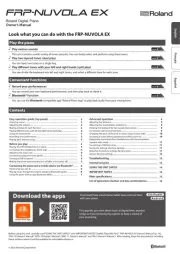
27 Augustus 2025
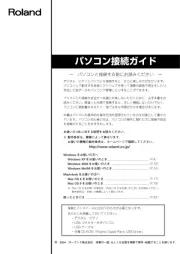
16 Mei 2025

13 Mei 2025
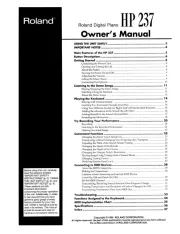
12 Mei 2025

12 Mei 2025
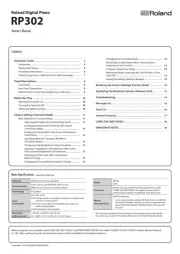
1 April 2025
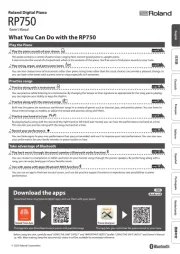
27 Januari 2025
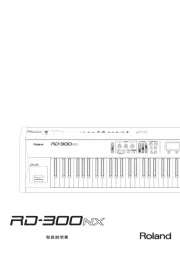
16 Juni 2024

10 Juni 2024

14 Mei 2023
Handleiding Piano
- Dexibell
- Thomann
- Kawai
- CLXmusic
- V-Tone
- Medeli
- Technics
- Nord
- Alesis
- Kurzweil
- IDance
- Vox
- Viscount
- NUX
- Carry-on
Nieuwste handleidingen voor Piano
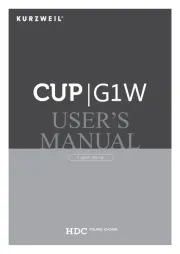
25 Augustus 2025
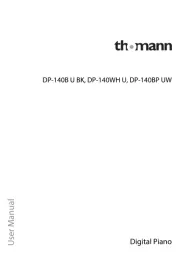
4 Augustus 2025
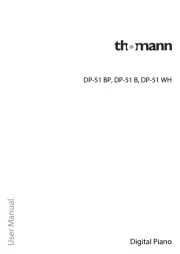
4 Augustus 2025
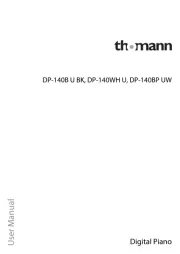
4 Augustus 2025
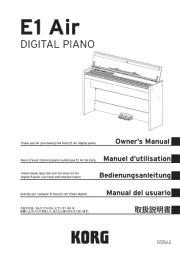
30 Juli 2025
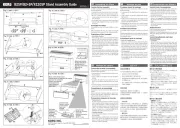
29 Juli 2025
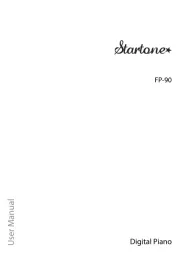
21 Juli 2025
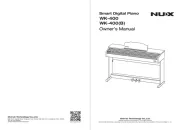
19 Juli 2025
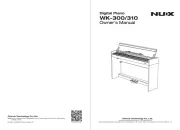
17 Juli 2025
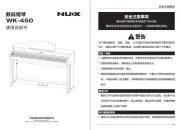
17 Juli 2025